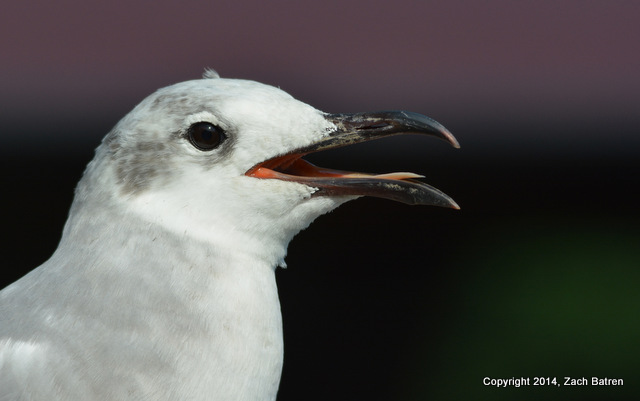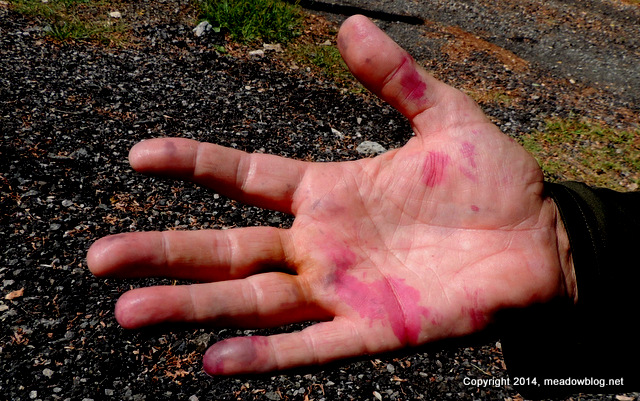 NJMC bird-bander Zach Batren asks, “Can you ID this bird?”
NJMC bird-bander Zach Batren asks, “Can you ID this bird?”
Hint: It was the first of its species to be banded at the NJMC bird-banding station.
Answer next week, theoretically.


Last Tuesday’s Teaser asked: “Why is this man’s hand purple?”
The answer, as several folks posited, is that the man in question is an NJMC bird bander, and he had just evaluated a bird (in this case, a Gray Catbird, as we recall) that had eaten some Pokeweed.
As we said, You may not have wanted to know.
 On Sunday, a dog without a collar was found at DeKorte Park; it is now at the Bergen County Animal Shelter.
On Sunday, a dog without a collar was found at DeKorte Park; it is now at the Bergen County Animal Shelter.
The dog is an adult male black-and-brown hound mix, according to the shelter.
Mike Maddaloni, who helped rescue the dog, writes:
“What a great dog … Took a little while to gain his trust, but after giving him water and pasta, he warmed up to us, sat near our cars, and tried to get in our cars to go ‘home.’
“Just really sad but it gives us hope that he will find a new home …He’s a very healthy dog, meaty, between 4-5′ long, big, strong, shiny coat, I don’t think the photos do him justice.
“Good temperament, responds to commands, no wounds, etc, and most important is a bird watcher he snapped his head around at every bird that flew overhead or by us)!”
If you know anything about this dog and possible owner, please call the shelter at (201) 229-4600. The shelter is located at 100 United Lane, Teterboro. (Thanks, Mike!)
The American White Pelican has now been at DeKorte for 87 days, eclipsing it previous record of 86 days (set yesterday, as you may have guessed).
Of the folks who entered the “Guess When the Pelican Will Leave” contest, 32 contestants have been eliminated and 10 remain.

Photo montage by The Record.
Jim O’Neill of The Record has a major story in today’s editions about how some animals in suburbia thrive — and create huge problems — while others barely hang on. The NJMC’s Mike Newhouse is quoted. Here’s a sample:
For a variety of reasons, suburbia is growing more wild. Some species are learning to thrive in this human-engineered landscape, leading experts to warn that the number of conflicts between people and wildlife will only increase.
The issue is forcing officials to assess how best to manage these species in places where traditional methods of wildlife management – hunting and trapping – are unpalatable or impractical.
At the same time, as suburbia expands its footprint, other species – those that need specific habitat to survive – struggle to hang on. The bobwhite quail, once common, is virtually extinct in New Jersey, as its grassland habitat disappears. Another bird, the piping plover, crowded out by beachgoers, now numbers about 120 nesting pairs in the state.
The link is here.